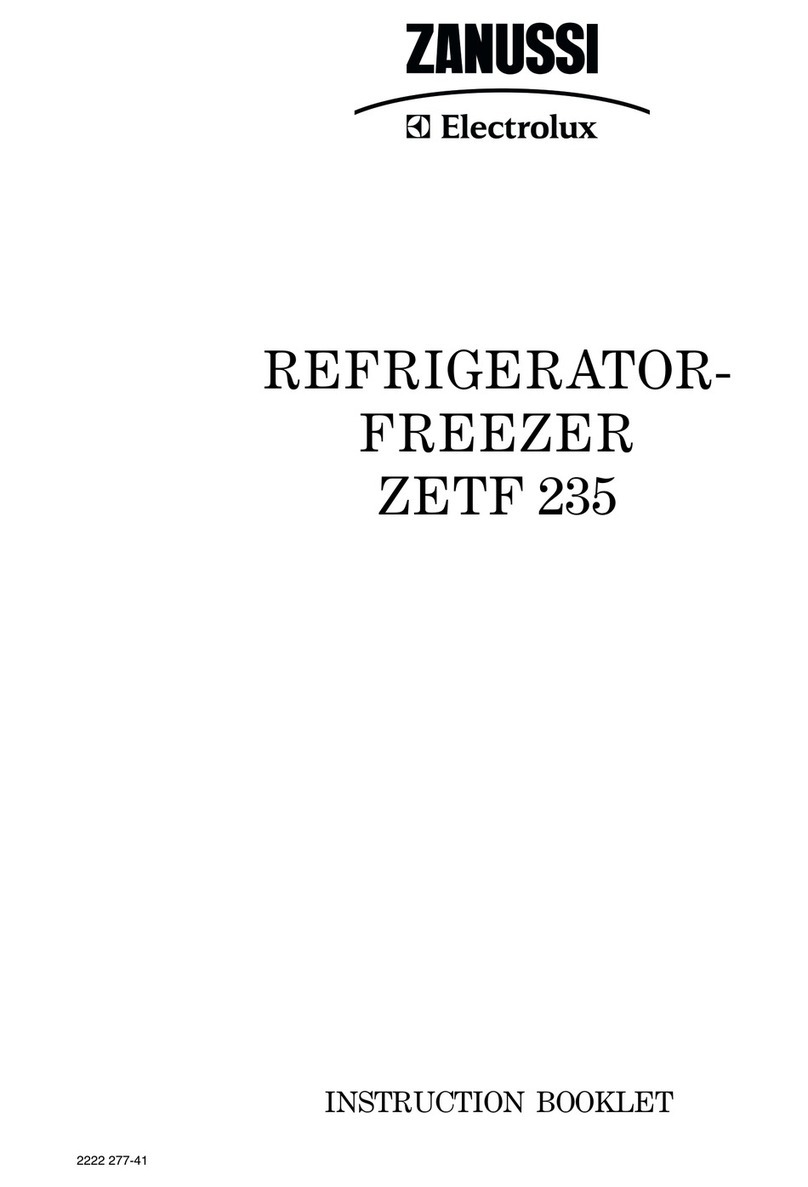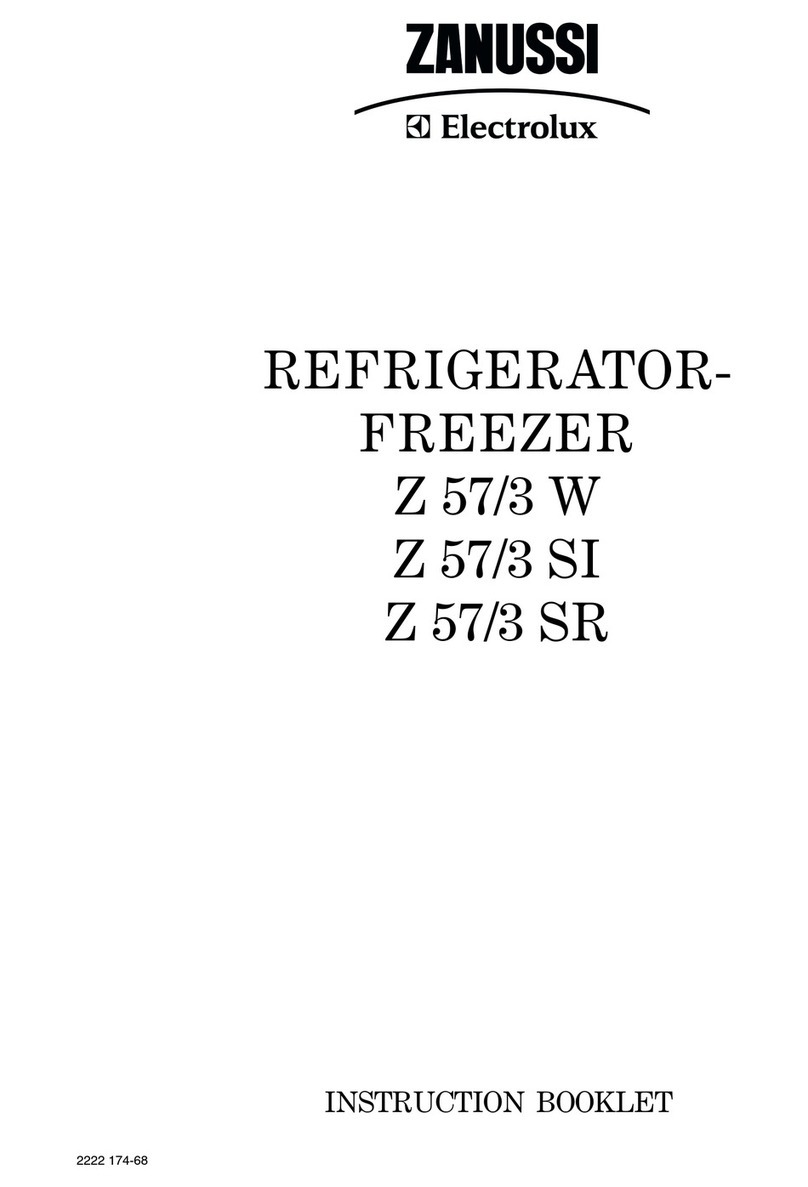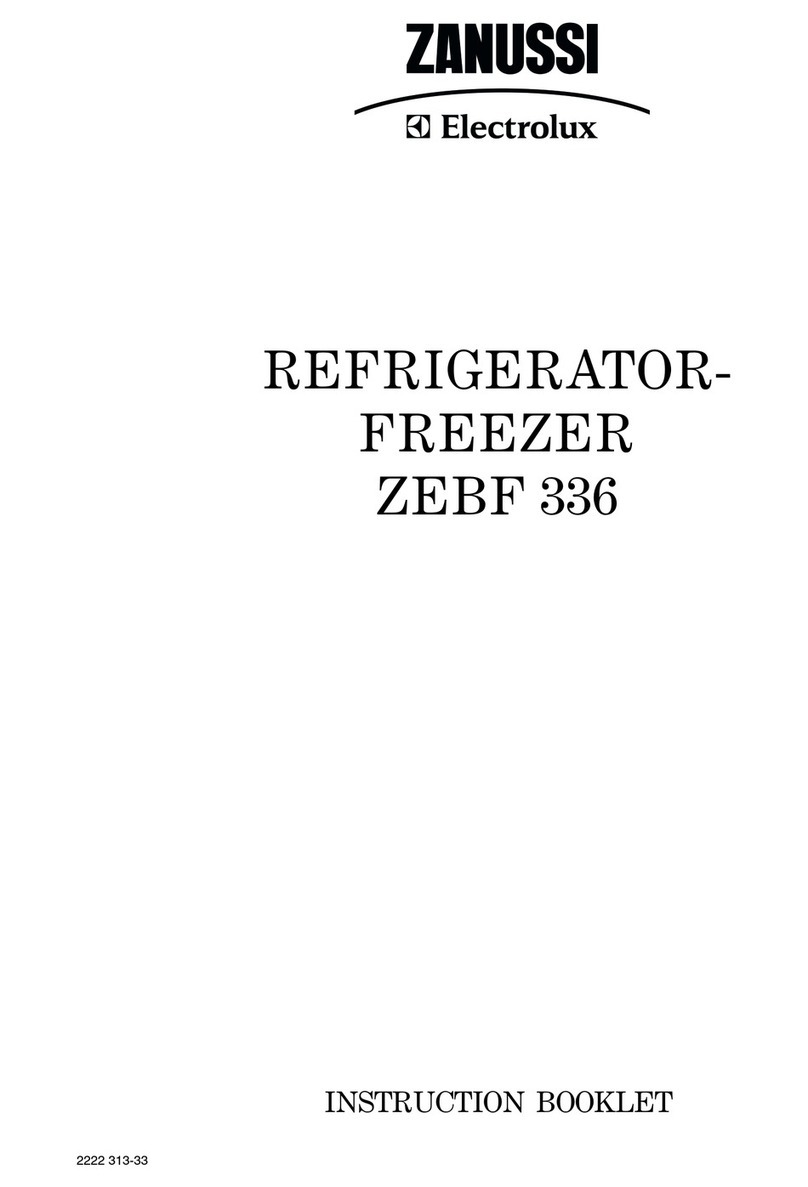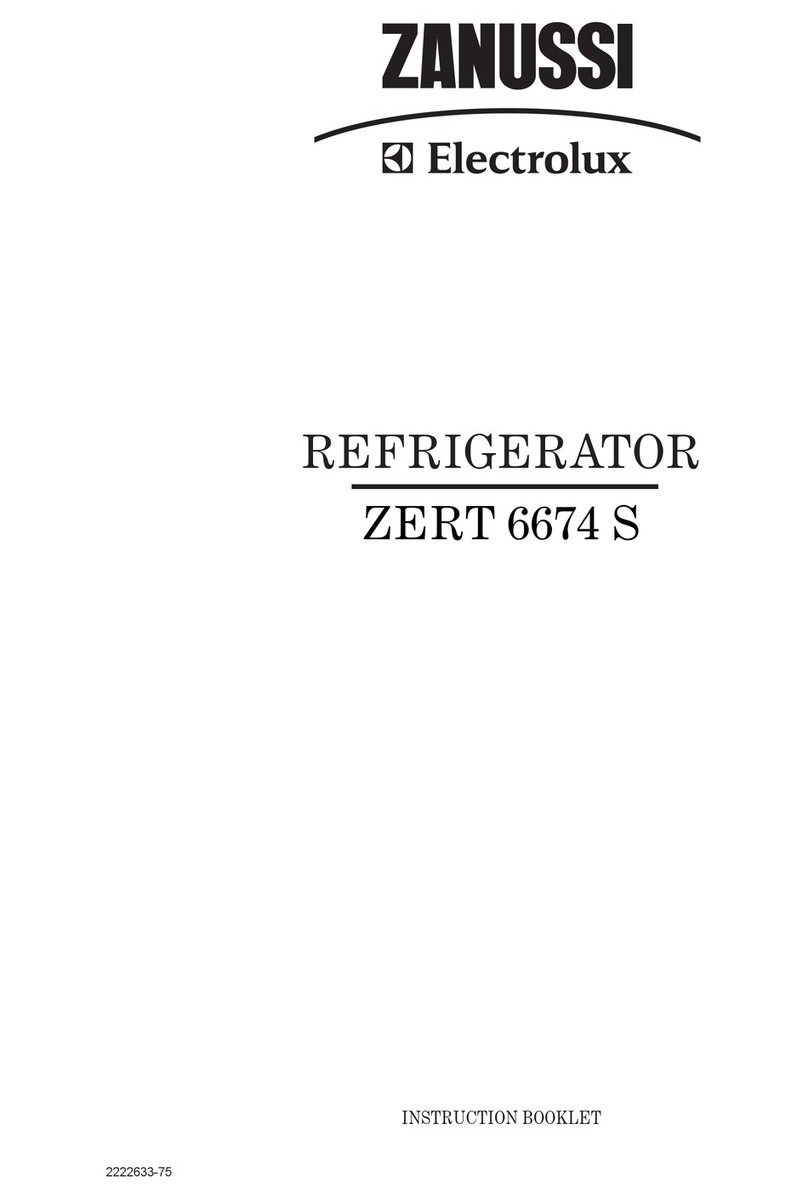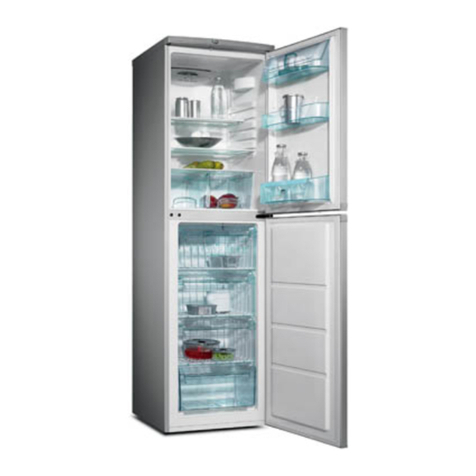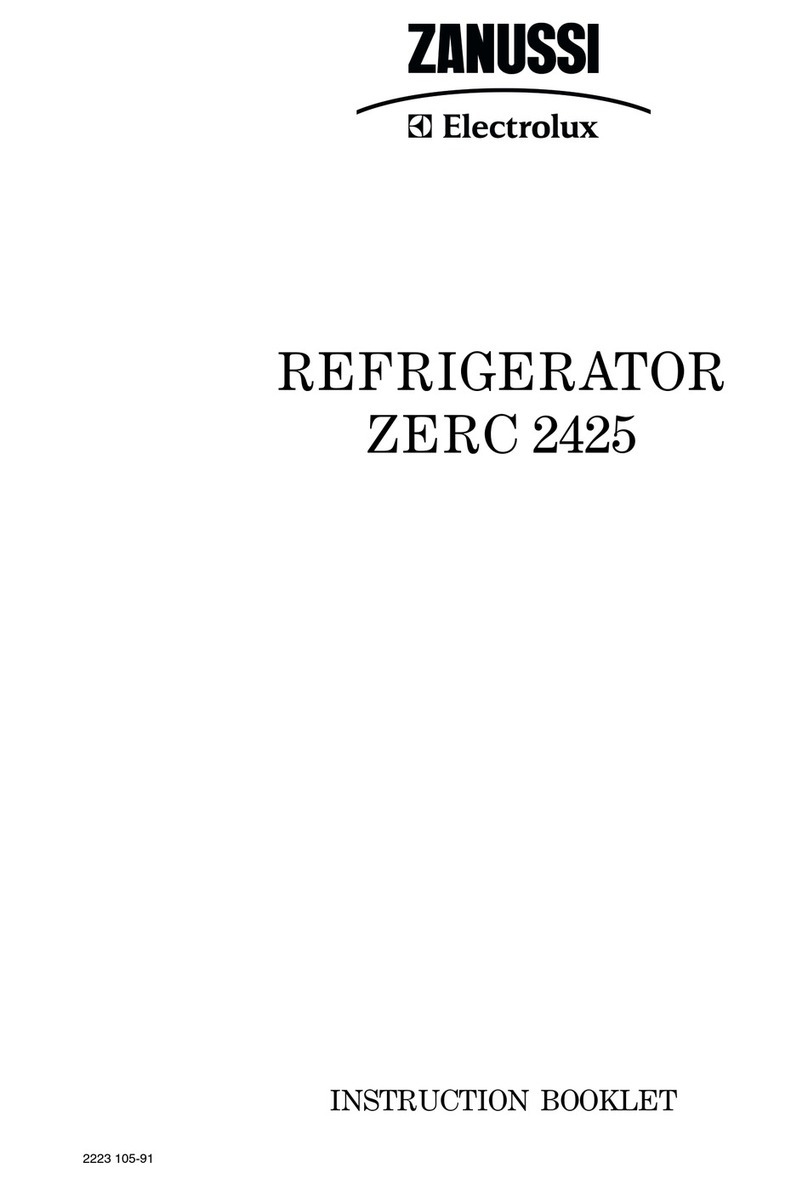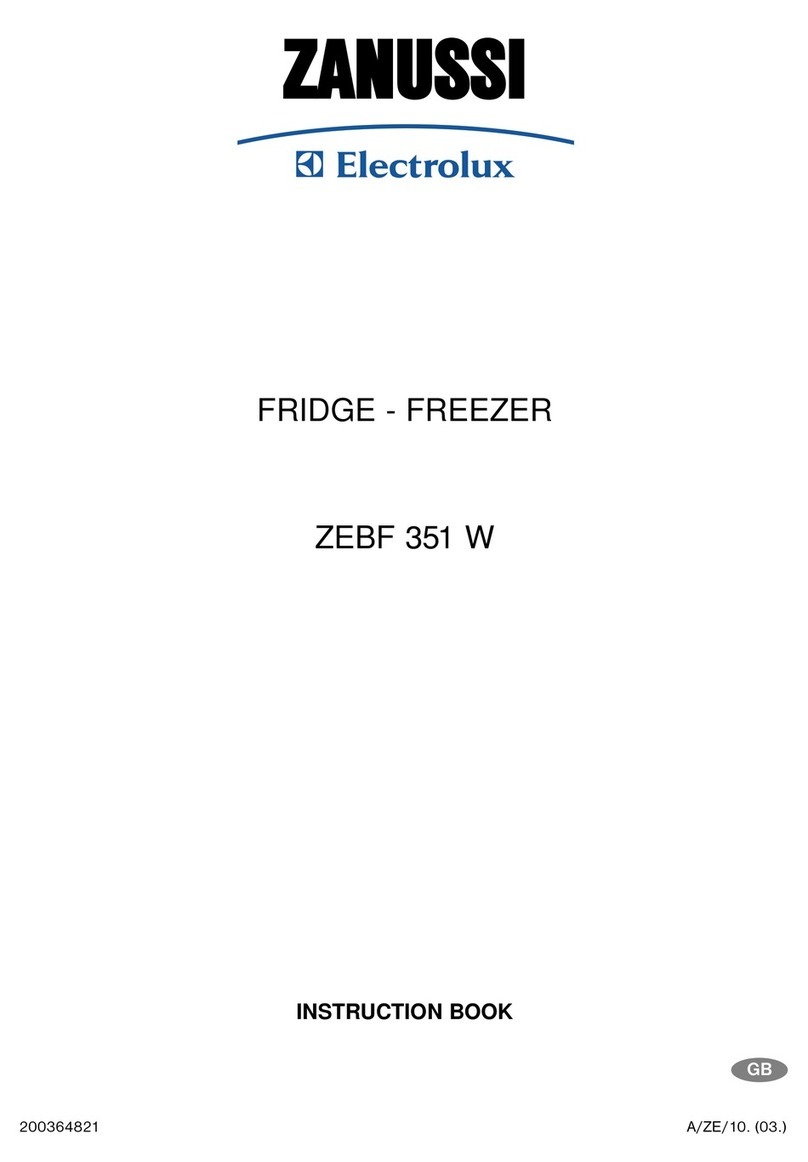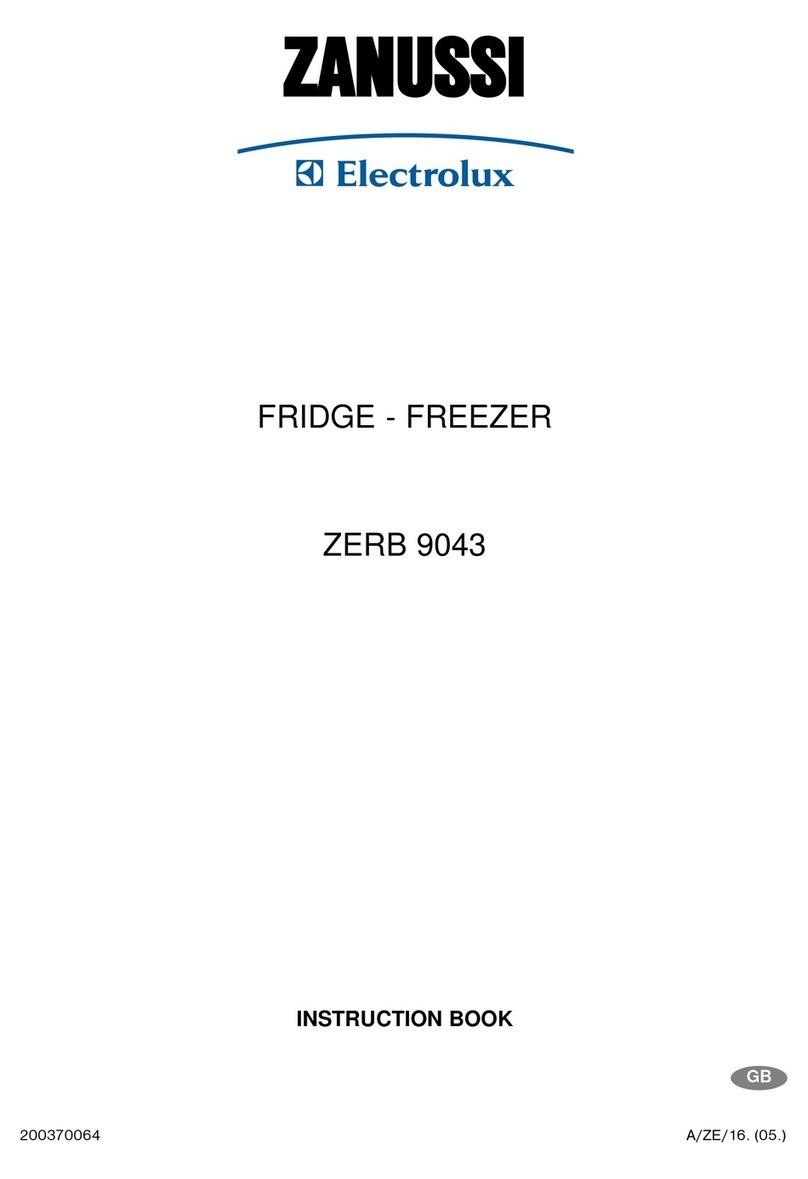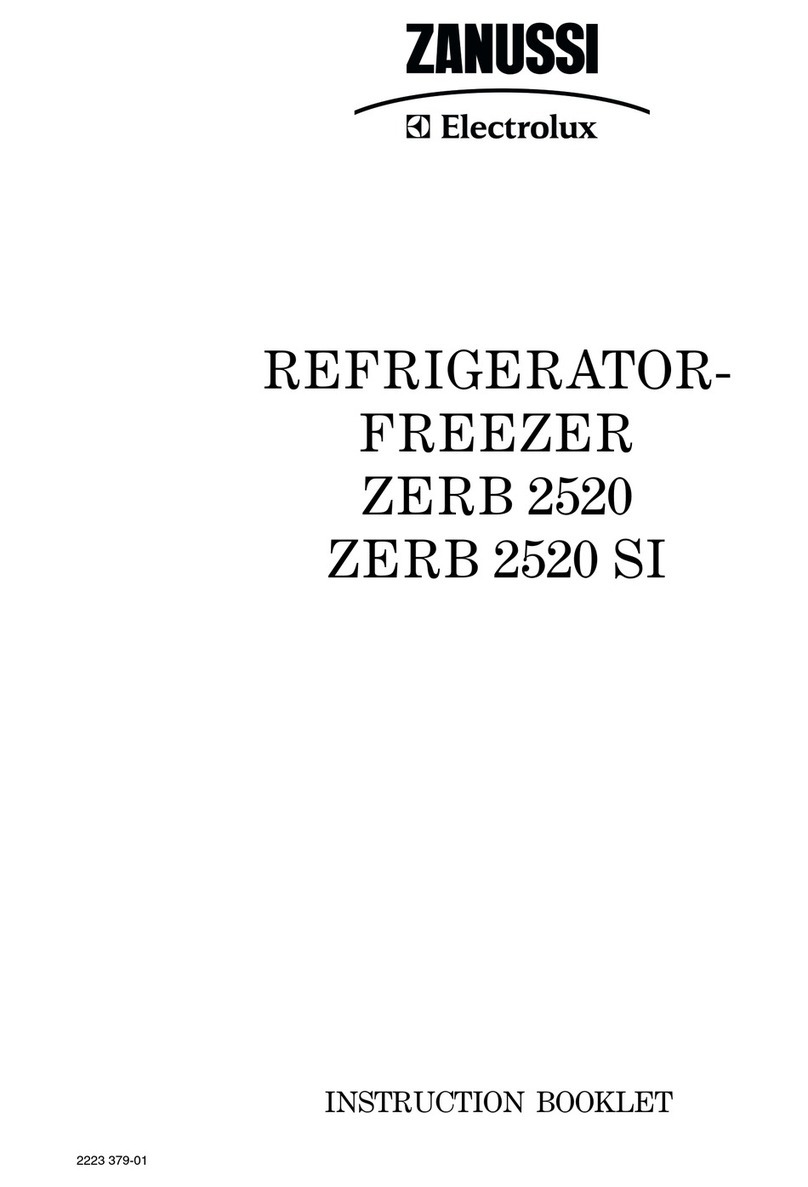8
• Keep the time between buying chilled food and
placing it in your fridge as short as possible. Tests
showed that the temperature of 1 litre of orange
juice rose to 22°C in an hour between the
supermar et and home. It then too 11 hours to
get down to 7°C in the refrigerator.
• Keep the refrigerator door closed as much as
possible.
• Do not push food together too much, try to allow
air to circulate around each item.
• Cool coo ed food as quic ly as possible but do
NOT place in the refrigerator until cool. (Leave
food in a cool place in order that it can then be
put in the refrigerator as soon as possible).
• Do NOT mix raw and coo ed meat, they must be
in separate containers. Ta e care not to let the
meat juices drip onto other food. If the meat does
drip, remove everything and clean thoroughly.
• Do not store food uncovered.
• The best way to defrost food is to put it in the
refrigerator to thaw slowly.
• Remove suspect food from your refrigerator and
clean (refer to “Maintenance and Cleaning).
• Never allow spillages to dry and harden.
• Ensure that food placed in the freezer is dated
and labelled and used in date order to ensure
that food is consumed at its best.
• It is important that food is used before its “best
before” date.
• Store eggs in the egg rac provided in the
refrigerator door. Discard any bro en or chipped
eggs.
• Regularly chec the refrigerator door seal to
ensure that it is clean and free from debris.
• Always wash your hands with soapy water and
dry them with a clean towel before handling food.
• Keep wor surfaces clean and avoid cross
contamination by not using the same wor
surface or nife, without washing them thoroughly
in between.
• The fresh foods to be frozen must be fresh and of
the best quality.
• The size of each pac should be small enough to
ensure that it is used in one go . Small pac s
freeze more quic ly and uniformly and give better
results.
• Frozen food, once thawed, must not be refrozen.
Lean food eeps better and longer than fatty food,
salt reduces the storage time.
• Wrap the food in polythene or aluminium freezing
bags or foil so that they adhere to the food and
provide an airtight seal .
• Pac aging which is swollen or has traces of
refrozen water droplets on the pac could indicate
that the product has not been ept at a suitable
temperature and that it may have lost its original
quality. Partially thawed food must not be
refrozen, it must be consumed within 24 hours.
Never exceed the storage times indicated.
• Never place hot food, bottles or cans of fizzy drin
in the freezer as they may explode. Containers
with a lid must not be filled to the brim.
• Do not open the door or place extra fresh food in
the freezer next to food which is already frozen as
this could cause the temperature of the frozen
food to rise and its quality and storage life to
reduce .
• The symbols on the drawers show different types
of frozen goods.
The numbers indicate storage times in months for
the appropriate types of frozen goods. Whether
the upper or lower value of the indicated storage
time is valid depends on the quality of the foods
and pre-treating before freezing.
HEALTH AND SAFETY GUIDELINES
Because o consumer demand, preservatives have been removed rom many pre-prepared oods. This
together with the changes in shopping habits to a once-a-week shop, mean that sa e handling and
storage o ood is even more important than ever.
The ollowing tips should help you to ensure that the ood in your home is in as per ect condition as
possible.




